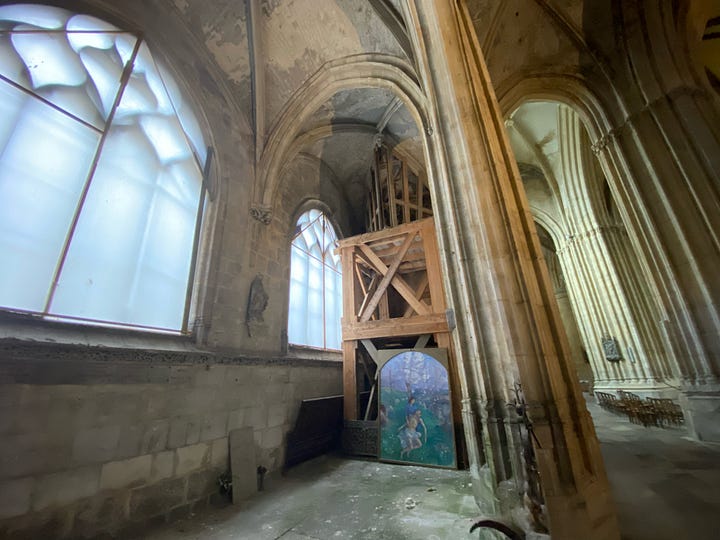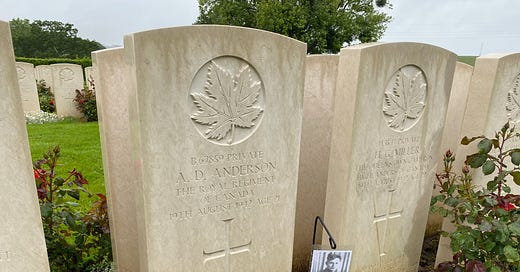Remembering the disaster at Dieppe
Two years before D-Day, Canadians led the charge in a poorly-planned raid on the French coastal port that would be their costliest battle of the war.
If Juno Beach is a symbol of Canadian success in the Second Word War, Dieppe, some 200 kilometres to the north-east of the D-Day beaches, is a symbol of catastrophic failure.
“Operation Jubilee,” launched on August 19, 1942, would involve nearly 5,000 Canadians of the 6,000 troops. By the end of the day, there would be 3,367 Canadian casualties, with 1,946 captured and 916 losing their lives, most on the beaches of Dieppe.
Fewer than half of the Canadians would ever make it back to England, where they had waiting impatiently for three years for a chance to see some action. One-fifth didn’t even live to regret it.
Since this is a travel blog, not a history essay, I won’t go into too much detail about why the Dieppe raid is considered a massive planning disaster. (It’s easy to find this online, if you want to know more.) Let’s just say it was a combination of politics and bravado on the part of some Allied commanders, who would later spin the tale to suggest that the lessons learned in the tragedy of Dieppe, which was only supposed to be a temporary raid, contributed to the success of the D-Day landings.
I wasn’t originally going to visit Dieppe because of its distance from Caen, which I had decided to make my home base for exploring Normandy. But a Canadian friend, who’d been travelling in France while chasing the World Cup Rugby championships, told me that visiting the Canadian cemetery there had been a profoundly moving experience for him and his wife. So on a rainy day in late May, I drove two hours north-east to the fishing village of Dieppe if, for nothing else, to honour the men who died in single bloodiest day of the war for Canadians soldiers.
The Dieppe Canadian War Cemetery is about 5 km from the village, nestled among rolling hills in the French farmland. It’s easy to find, travelling along the narrow Rue des Canadiens, but it is isolated and clearly not set up for many visitors. Looking for a non-existent parking lot, I found myself heading down the overgrown Chem. de la Canarderie farm road until encountering two vehicles heading toward me, forcing me to back up a few hundred metres to the intersection of the cemetery road, which had enough space to park maybe three cars before reducing to an even smaller, dead end, farm road.









The site had been chosen by Germans, who had taken on the task of burying the soldiers left behind after the Canadian evacuation. That explains the back-to-back layout of the graves, which is highly unusual for an Allied war cemetery. In all, 948 combatants are buried here, including at least 582 Canadians, 174 Britons, 4 New Zealanders, 3 Poles, 1 Australian, one Indian and 187 unidentified casualties.
The out-of-the-way location and pastural setting provide a sense of peace as you walk among the tombstones wondering, as Canadian Tenor John McDermott sings in The Green Fields of France, about the lives of those who died fighting for the liberation of men, women and children they had never met.
The sun now it shines on the green fields of France
There's a warm summer breeze that makes the red poppies dance
And look how the sun shines from under the clouds
There's no gas, no barbed wire, there's no guns firing now
But here in this graveyard it's still No Man's Land
The countless white crosses stand mute in the sand
To man's blind indifference to his fellow man
To a whole generation that were butchered and damned.
The people of Dieppe have honoured the Canadian effort with a memorial park and a museum devoted to the raid. The museum was unfortunately undergoing final renovations during my visit, with the grand re-opening slated for thee days later! (The closure had unfortunately not been mentioned on its website.) It was disappointing to have driven all that way to find the doors closed, but I found some solace (and shelter from the rain) in the nearby Église Saint-Remi, an 16th-century church designated a monument historique in 1910 and currently undergoing renovations—but still open!!





Dieppe’s connection with Canada goes back as far as Samuel de Champlain and Charles Le Moyne, and it was from Dieppe that a large convoy of “Filles du Roy” shipped off to New France to help populate the fledgling colony. Those key connections are inscribed on the Dieppe Monument in Square du Canada, a reminder of the bond between the town and its eventually successful liberators.






If you ever make it to Dieppe, another site of interest is the Notre Dame de Bon Secours, a small church built atop the north cliff in 1876. The chapel was constructed to honour those who had lost their lives at sea and the walls are covered in plaques commemorating the sailors, many who died after hitting German mines, even decades after the war had ended.




With my visit cut short by the museum closing, rather than return to Caen on the major highways I had taken to get to Dieppe, I opted for a more scenic return along coastal roads that would take me through numerous small villages as well as the larger towns of Fécamp and Étretat.
I’ll explore those towns a little more with you next week. Thanks for taking the long road to Dieppe with me, et au revoir.






